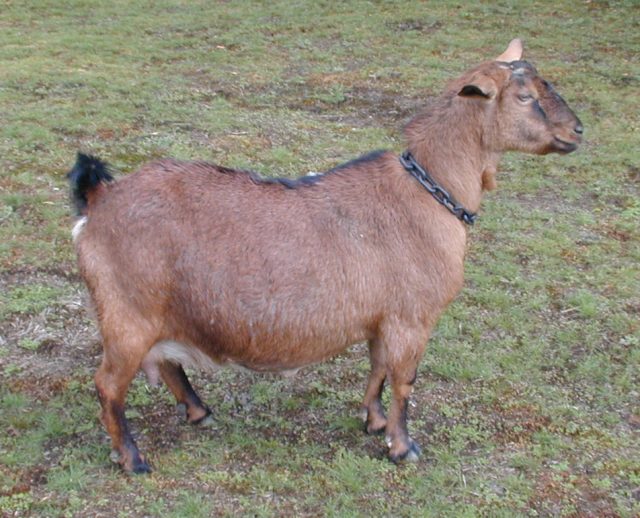Type the name of the breed you're looking for below
[wpdreams_ajaxsearchlite] Don't see the breed your're looking for? Click here and let us know!
Kinder goat
| Place of Origin | United States |
| Origin | The Kinder is a breed of goat, originating from a cross between a pygmy goat and a Nubian goat in 1985 at Zederkamm Farm in Snohomish, WA. As of 7 April 2009, there were about three thousand Kinder goats registered with the Kinder Goat Breeders Association. The Kinder goat breed began in the late summer of 1985, when Zederkamm Farm's Nubian buck died, leaving two Nubian does without a mate. Since they also kept pygmy goats and did not want to take the does to another farm to be bred, they were bred with their pygmy buck. Left to his own devices, the buck accomplished the two successful breedings, making use of log sections and sloping land to reach the correct height. On 30 June and 4 July 1986, the first three Kinder does were born. It was another year before the first Kinder buck was born. |
| Purpose | Meat, Milk |
| Characteristics | Kinder does weigh about 110–125 pounds (50–57 kg) or so, and bucks a little more - 135–150 pounds (61–68 kg). The maximum height at the withers of a Kinder is 26 inches (66 cm) for does and 28 inches (71 cm) for bucks, and the minimum is 20 inches (51 cm). Unlike many breeds, Kinder goats are aseasonal breeders, meaning they can be bred throughout the year; this trait is inherited from their pygmy ancestors. Also, they frequently have multiple births (triplets, quadruplets, and even quintuplets are common in Kinders. There have been 7 reported births of sextuplets). Meat In spite of their smaller size, Kinders are generally more muscular than a full-size dairy goat, often yielding dressing percentages over 60%. Dairy Kinder milk has a high butterfat content, sometimes having higher than 7 percent butterfat; it also has higher amounts of milk solids, yielding larger amounts of cheese. |



